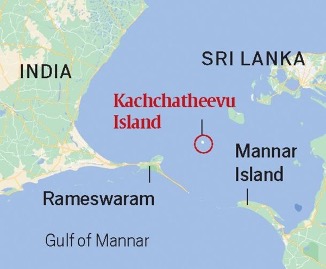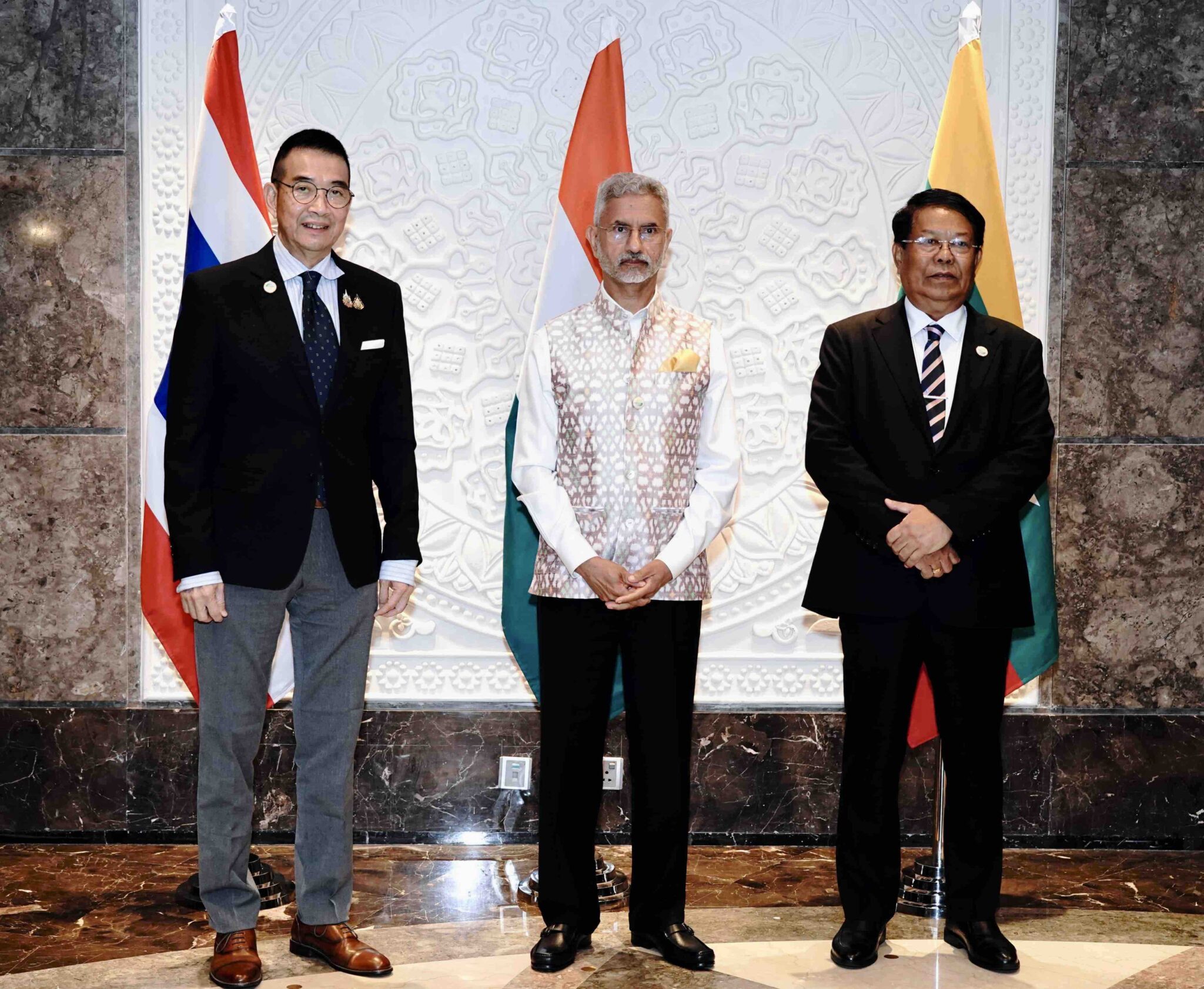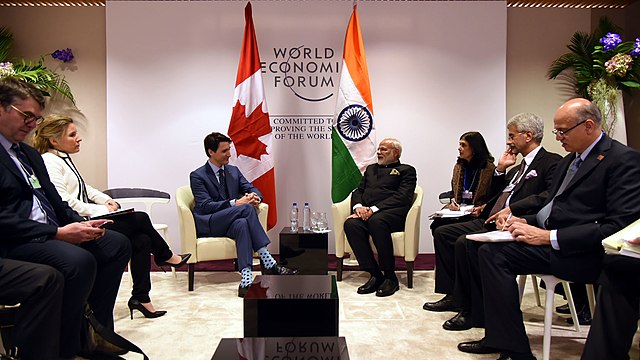By Syed Imran Sardar[i]

For political parties, compelling narratives and inspiring slogans are important vehicles to mobilize mass support ahead of elections. The importance of such narratives increase manifold when the existence of a certain political party is at stake in a particular constituency. This is the case with the Bharatiya Janata Party (BJP) in Tamil Nadu. The BJP in Tamil Nadu is grappling with an existential threat since the exit of All India Anna Dravida Munnetra Kazhagam (AIADMK) from the BJP-led National Democratic Alliance (NDA) in September 2023. Even prior to this breakup, the BJP had hardly managed to penetrate Tamil Nadu’s political landscape since its establishment in 1980. Its performance in the 2019 general elections was abysmal as it could only grab 3.66 per cent vote share without winning a single seat out of 39 seats. Additionally, it also lost its only Lok Sabha seat that it won in 2014 in Kanniyakumari to the Congress. In the recent elections, the BJP has changed its strategy in Tamil Nadu, both politically and in terms of narratives, aiming to overturn its reputation as an ‘abandoned political party.’
Politically, BJP under the presidency of Annamalai Kuppusamy, has resorted to increase its vote share to at least 25 per cent. Since AIADMK breakup, the BJP has been banking on the caste outfits, and AIADMK rebels. Some of the major instances in this regard are, Panneerselvam, former AIADMK treasurer, Dhinakaran’s Amma Makkal Munnettra Kazagam and the Pattali Makkal Katchi. Parallel to this, both the BJP and the AIADMK are secretly supporting each other in those constituencies where their respective positions are weak. The target of Modi’s political engineering is the DMK which is a part of Congress-led Indian National Developmental Inclusive Alliance (INDIA) and relatively much stronger in almost all the constituencies.
Apart from political maneuvering, the BJP is also riding on the sympathy vote by sensitizing the rights of Tamil Nadu fishermen. The Tamils are facing continued detentions, and seizure of fishing vessels. Since the then Congress-led government of Indira Gandhi handed over the Katchatheevu Islet to the Sri Lankan government in 1974 the Tamils feel that their traditional rights have been compromised. Before, they were free to move in and around the Katchtheevu region which is famous for fish diversity and abundance. Since 1974, the Tamil Nadu fishermen have been demanding the retrieval of the Kathatheevu and have demanded the central government time and again to take up this issue.
This is not the first time Modi has dubbed the Congress on this Katchtheevu issue.
Taking advantage of the sensitivities of Tamil fishermen, Modi in a social media post, said that “Eye-opening and startling! New facts reveal how Congress callously gave away #Katchatheevu. This has angered every Indian and reaffirmed in people’s minds—we can’t ever trust Congress! Weakening India’s unity, integrity and interests has been Congress’ way of working for 75 years and counting.”
This is not the first time Modi has dubbed the Congress on this Katchtheevu issue. On August 10, 2023, Modi, in his speech at the Lok Sabha on the eve of opposition’s no-confidence motion said that “Katchatheevu is an island between Tamil Nadu and Sri Lanka. Somebody gave it to another country. It happened under the leadership of Indira Gandhi, Wasn’t that part of Maa Bharati there?” Echoing Modi’s remarks, External Affairs Minister Dr. S. Jaishankar said that “The Congress and the DMK, have approached this matter as though they have no responsibility for it, as though the situation is for today’s Central Government to resolve. We now know not only who did it but also who hid it.”
The recent onslaught on the Katchatheevu issue was plotted on the information which Annamalai obtained through Right to Information (RTI) application. Modi, however, relying on what can be referred to as a half-truth. He portrayed the information as a Charge Sheet against the Congress. The official documents and parliamentary records reveal that the then Prime Minister Jawaharlal Nehru had dismissed the sovereignty claim issue over the Katchatheevu as ‘inconsequential’. In Nehru’s minutes, which was a part of a note prepared by then Commonwealth Secretary Y D Gundevia, shared by the Ministry of External Affairs (MEA) as background information with the Informal Consultative Committee of Parliament in 1968, he wrote, “I attach no importance at all to this little island and I would have no hesitation in giving up our claims to it. I do not like this pending indefinitely and being raised again in Parliament.” The then Foreign Secretary of India, Kewal Singh also admitted that Sri Lanka’s position on Katchatheevu was ‘very determined’ and in Dutch and British maps the island was a part of the Kingdom of Jaffnapatnam.
The central government’s response to Tamil fishermen however, was nothing but an advice to respect the agreement and remain within Indian waters. Even, in August 2014 under the Modi government, the then Attorney General Mukul Rohtagi had told the Supreme Court in a hearing against the petition of retrieval filed by the then Chief Minister Jayalalithaa in 2003 that “The island was given to Sri Lanka on the basis of a bilateral agreement in 1974. To retrieve it now, we have to go to war.” The current Chief Minister of Tamil Nadu, M. K. Stalin also wrote a letter to Modi to discuss the Katchatheevu issue with the his Sri Lankan counterpart, Ranil Wickremesighe ahead of the latter’s visit to India in 2023. Both the AIADMK, and the DMK governments have been requesting the Indian government in the past to look into this matter but no one in the Centre has played out the matter to its political advantage. The reason was very simple that issue lacks substance, and India has gained exclusive rights over Wadge Bank, a much bigger area in 1976 agreement with the Sri Lankan government.
Sri Lankan position was strong in its claim on the Katchatheevu Islet, yet Indira Gandhi’s ceremonial surrender has left a deep impact on the people of Sri Lanka which unfortunately has been shattered by Modi’s uncalled for remarks of reclaiming the Katchatheevu.
The Katchatheevu is a small, uninhabited patch of land of around 285 acres. It is situated in the Palk Straits, around 33 kilometers from the Indian coast, and around 62 kilometers southwest of Jaffna, the northern tip of Sri Lanka. The Katchatheevu and its surrounding region is famous for fish diversity and abundance. This territory has been disputed since the British era. After independence, it remained a contentious issue between India and Sri Lanka because of un-demarcated maritime boundaries. Finally, the territory was ceded by the government of India under Prime Minister Indira Gandhi to the Sri Lankan government almost half a century ago. The ceding was ceremonious. In 1974, Indira Gandhi, the then Prime Minister of India, and her Sri Lankan counterpart, Prime Minster Sirimavo Bandaranaike signed ‘Indo-Sri Lankan Maritime Agreement.’
Hence, Modi’s remarks stand in striking contrast to Jawaharlal Nehru’s views on the Katchatheevu Island. Perhaps Modi is completely naïve about the ground realities of that time. At the time of British departure from the subcontinent, Ceylon was bit uncertain about its future. Initially, it saw its survival as an appendage state to India. However, it continued its struggle under the leadership of J. R. Jayewardene to neutralise an anticipated Indian dominance. In mid 1940s, things began moving in his favor. In a letter to PM Nehru in June 1945, he clearly expressed his resolve for independence. He commented: “I do think that either the State Council, or the country will accept anything less than has been promised to India and Burma, that is, the status of a free and equal partner in the Commonwealth of Nations.”[i] This shift in perception of Ceylon from an appendage state to an independent state was concerning, especially given India’s existing apprehensions regarding the influence of China, the US, and Australia in the South Asian region. But the successive government of SWRD Bandaranaike and his wife Sirimavo Bandaranaike proved that Sri Lanka’s foreign policy was completely non-aligned as it kept India in good mood at one hand, and established a non-partisan world view on the other.[ii]
From Indian side, the credit goes to the then governments of India which were able to secure their interests, primarily the security interests, in the region with their diplomatic skills. The Indo-Sri Lankan Maritime Agreement in this regard was a testimony of India’s diplomatic professionalism which sow the seeds of enduring friendship with Sri Lanka. Other than that, the conclusion of Sirima–Gandhi Pact of granting citizenships of Indian Tamils, speaks volume about the iron-clad friendship between the two countries. Although, Sri Lankan position was strong in its claim on the Katchatheevu Islet, yet Indira Gandhi’s ceremonial surrender has left a deep impact on the people of Sri Lanka which unfortunately has been shattered by Modi’s uncalled for remarks of reclaiming the Katchatheevu.
Another perspective is that Mrs, Bandaranaike approached Indira Gandhi to settle the matter diplomatically in order to appease the Tamil ethnic community that had been demanding the complete control of north and northeast of Sri Lanka. This perspective lacks substance since Tamils on Sri Lankan side were largely Indian Plantation Tamils, and Sri Lanka have been at the loggerhead with the Indian governments to take them back by granting them Indian citizenships, and Sirima-Gandhi Pact was a clear vindication of this argument. Secondly, if it was Sri Lanka at the receiving end then why Colombo was able to have a complete control of the Katchatheevu? The agreement might have reached to a ‘shared rights’, but that was not the case at all. So, instead of twisting the facts, we should admit that whatever happened in 1970s was actually served the purpose of both countries and it was an era of ‘deepening relationship’.
Moving fast forwards, toady, for Sri Lanka, the issue is not whether the Katchatheevu belongs to New Dehli or Colombo, but Indian fishermen’s poaching in and around the Katchatheevu waters with bottom-trawlers which incur huge loss to the local fish community of Sri Lanka. According to Ravindran Priya, a 37-year-old mother of three children from the local fisher community: “Before all this happened (before Indian trawlers’ intervention) we used to do business of over 100 kilos of fish per day, but now we can do only about 10 to 15 kilograms a day. The Indian trawling issue has become a big problem in our day to day lives now. Because they arrive in hundreds, the amount of fish caught by our local vessels have decreased significantly, thus this issue reflecting adversely on our income.” Apart from illegal catchment, Indian fishermen also steal rich-fish harvest from Sri Lanka. Number of incidents of looting and fighting are reported on daily basis. Damages to the maritime environment by Indians is another long story.
Modi’s criticism at this point of time was aimed at achieving political advantage in the recent elections of Tamil Nadu
In response to Modi’s remarks, Sri Lanka’s Foreign Minister Ali Sabry, PC said: “This is a problem discussed and resolved 50 years ago and there is no necessity to have further discussions on this. I don’t think it will come up” since both Tamils and Sinhalese are united on this issue as there is no room for exploiting the Tamil card as such to get any advantage.
Modi’s criticism at this point of time was aimed at achieving political advantage in the recent elections of Tamil Nadu that held on April 19, 2024. Whether raking up a decades-old issue of Katchatheevu has benefitted Modi is yet to be seen as the elections results are due in the first week of June, 2024. Nevertheless, India’s official position has been very clear that the Katchtheevu Islet belongs to Sri Lanka, and Indians can only stay there for drying their nets and perform rituals. The 1976 agreement have put a bar on fishermen of both India and Sri Lanka from entering each other waters.
For Modi, it was just an election ploy. For the local fisher communities, it’s a matter of survival. The issues at the Katchtatheevu Isle are grave. With Modi’s callous remarks, Sri Lankan authorities will probably be finding it difficult to address the grievances of Sri Lankan fish communities in near future since the debate has taken a new turn. If Modi comes up with two-third majority, he probably will push for retrieval of Katchatheevu Isle.
Although, Modi does not have any workable plans to retrieve it, yet his retrieval mantra may create frictions between the two friendly countries. Modi’s foreign policy clearly stands in contrast to the conscience and farsightedness of India’s founding leaders. Specifically, Modi’s neighborhood policy is highly centralized and narrowed. His foreign policy approach continues to hang around certain power corridors in the respective neighboring countries. In case of Sri Lanka, Modi, perhaps, has forgotten the cost that the Island had paid to address the (in)security concerns of New Delhi. Such stereotype narratives might drag the Island into a politics of ‘taking sides’ which is neither in India’s favor nor Sri Lanka’s. It is high time Modi should pay attention to the public sentiments of the respective countries in its neighborhood policies. If the citizens of Sri Lanka can successfully challenge the dominance of the powerful Rajapaksa regime, there may come a time when they stand up against India’s hegemonic policies toward the island nation.
This article is published as an SAFN Guest Essay and gives the views of the author, not the position of the SAFN.
[i] Author is a Research Analyst at the Institute of Regional Studies, Islamabad. He can be reached at maan_shah@hotmail.com
[ii] Outed in Avtar Singh Bhasin, India in Sri Lanka between Lion and Tigers (Manas Publications: New Delhi, 2004) p.18
[iii] Ibid


